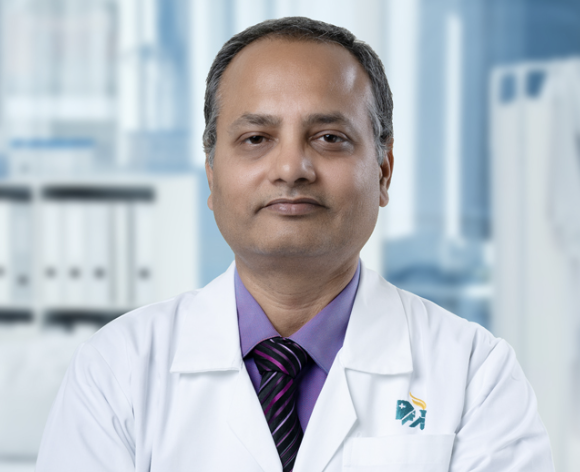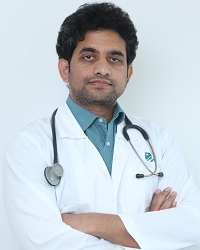Could not find what you are looking for?
- Diseases and Conditions
- Salivary Gland Cancer - Early Signs, Risk Factors, Diagnosis, and Treatment Explained
Salivary Gland Cancer - Early Signs, Risk Factors, Diagnosis, and Treatment Explained
Salivary gland cancer starts in the glands that make saliva---most commonly the parotid (in front of the ear), submandibular (under the jaw), and sublingual (under the tongue) glands, as well as hundreds of tiny "minor" salivary glands lining the mouth, nose, sinuses, and throat. Unlike many head and neck cancers that are linked to tobacco or alcohol, salivary gland cancers are diverse, relatively uncommon, and driven by tumorspecific biology. The encouraging news: with precise surgery, modern radiation techniques, and tailored systemic therapies, many people achieve longterm control with excellent quality of life. This comprehensive article explains what salivary gland cancer is, who is at risk, symptoms to watch for, how doctors diagnose and stage it, evidencebased treatments (surgery, reconstruction, radiation, chemotherapy, targeted and immune therapies, and proton therapy in select cases), prognosis, and prevention at Apollo Hospitals.
Note: This guide is for education and does not replace medical advice. An experienced head and neck oncology team should direct personal care.
Overview: What Is Salivary Gland Cancer and Why Early Detection Matters
Salivary gland cancer occurs when cells in a major or minor salivary gland acquire genetic changes and grow uncontrollably. These tumors range from slowgrowing, lowgrade cancers to aggressive, highgrade ones, and treatment is highly individualized. Because many salivary gland tumors are benign, accurate diagnosis is essential to avoid overtreatment. When cancer is present, early, expert care can preserve facial nerve function, chewing, speech, and appearance---while maximizing cure.
Why early detection matters:
- Smaller tumors are easier to remove with clear edges of the removed tumor (margins) and less risk to the facial nerve and jaw function.
- Early treatment reduces the need for extensive surgery, complex reconstruction, and wider radiation fields.
- Prompt, accurate pathology and special tests on the tumor that show if targeted medicines may work (molecular profiling) enable the most effective, least toxic therapy.
How common is it?
- Salivary gland cancers are uncommon compared with other head and neck cancers. The parotid gland is the most frequent site; most parotid tumors are benign, but a meaningful proportion are malignant. Cancers of the submandibular, sublingual, and minor salivary glands are less common but more likely to be malignant.
Types: Main Subtypes and Their Behavior
Salivary gland cancers are diverse. Knowing the subtype helps predict behavior and choose treatment.
- Mucoepidermoid carcinoma
- Can be low, intermediate, or high grade; lower grades often have excellent outcomes, while high grades behave more aggressively.
- Adenoid cystic carcinoma (ACC)
- Characterized by cancer spreading along the nerves (perineural spread), which may cause numbness or pain and a tendency for late recurrence; often benefits from surgery plus additional treatment after surgery (adjuvant) radiation and longterm followup.
- Acinic cell carcinoma
- Often low or intermediate grade; typically favorable but can recur late.
- Salivary duct carcinoma
- Highgrade, aggressive; can express androgen receptor (AR) and sometimes HER2, allowing targeted hormonal or HER2directed therapies.
- Carcinoma ex pleomorphic adenoma
- Malignancy arising within a longstanding benign pleomorphic adenoma; behavior depends on extent and grade.
- Secretory carcinoma (ETV6NTRK fusion--positive in many cases)
- Often sensitive to TRK inhibitors when systemic therapy is needed.
- Polymorphous adenocarcinoma, epithelialmyoepithelial carcinoma, myoepithelial carcinoma, and others
- Usually arise in minor salivary glands; behavior varies by subtype and grade.
- Minor salivary gland cancers
- Arise in the palate, tongue base, sinuses, larynx; often diagnosed later due to location; surgery plus radiation is common.
Causes: Known or Suspected Contributors
- Most cases have no single identifiable cause.
- Prior radiation exposure to the head and neck is a rare contributor.
- Environmental/occupational exposures (e.g., certain dusts or solvents) have been studied but with inconsistent associations.
- Genetic alterations (such as ETV6NTRK fusions in secretory carcinoma, MYB/MYBL1 alterations in ACC, AR/HER2 in salivary duct carcinoma) drive tumor biology and can guide therapy.
Lifestyle factors like tobacco and alcohol are not major drivers compared with other head and neck cancers.
Risk Factors: Lifestyle, Genetic, Environmental, and Medical
Having a risk factor does not mean cancer will occur; it only increases likelihood.
- Age: more common in midtolate adulthood (but can occur at any age).
- Prior radiation: therapeutic or environmental exposure (rare).
- Longstanding salivary masses: especially pleomorphic adenomas, which can very rarely transform.
- Workplace exposures: potential links in some studies (not definitive).
- Family/genetic syndromes: uncommon contributors.
What Are the Symptoms of Salivary Gland Cancer?
Symptoms depend on the gland and proximity to nerves and nearby structures.
Common early signs:
- A painless lump near the ear (parotid), under the jaw (submandibular), under the tongue (sublingual), or on the palate/inner cheek (minor glands).
- A palate lump that feels firm or causes a denture to fit poorly.
Concerning features:
- Facial weakness or asymmetry (suggesting facial nerve involvement).
- Numbness, tingling, or pain in the face, tongue, palate, or jaw (possible cancer spreading along the nerves).
- Rapid growth, skin fixation, ulceration, or persistent pain.
- Difficulty chewing, swallowing, or opening the mouth.
- A lump in the neck (lymph node enlargement).
Any new, persistent salivary lump (especially with facial nerve symptoms) deserves prompt specialist evaluation.
How Is Salivary Gland Cancer Diagnosed?
Accurate diagnosis pairs expert examination with highquality imaging and tissue sampling interpreted by experienced head and neck pathologists.
Clinical evaluation
- Head and neck exam, cranial nerve testing (especially facial nerve), oral/nasal endoscopy for minor salivary sites.
- Dental and occlusion assessment when the jaw or palate is involved.
Imaging
- MRI with contrast: preferred for softtissue detail, cancer spreading along the nerves, and deep lobe parotid involvement.
- Contrastenhanced CT: evaluates bone, calcifications, and nodal disease; useful for surgical planning.
- Ultrasound of salivary gland and neck nodes: guides needle biopsies.
- PETCT: considered for highgrade cancers, advanced disease, or when distant spread is suspected.
Tissue diagnosis (key step)
- Ultrasoundguided fineneedle aspiration (FNA) or core needle biopsy is the preferred method for major salivary glands to avoid tumor seeding (spreading cancer cells during the procedure). This safe technique can often distinguish benign vs malignant tumors and suggest the cancer subtype.
- Open biopsy is generally avoided for major salivary glands specifically to prevent tumor seeding; definitive diagnosis is often finalized after surgical removal with full pathology.
Pathology and molecular profiling
- Determines exact subtype and grade; looks for features like cancer spreading along the nerves and lymphovascular invasion and the edges of the removed tumor (margin) status.
- Special tests on the tumor (molecular tests) (AR/HER2, ETV6NTRK, MYB/MYBL1, others) guide prognosis and targeted therapy in advanced settings.
Baseline function
- Facial nerve documentation, speech/swallow evaluation (when oral cavity or palate is involved), and nutrition assessment.
Staging and Grading: What They Mean
Staging (TNM, sitespecific)
- T: tumor size and local extension, including skin, bone, facial nerve, deep tissues, and skull base.
- N: regional lymph node involvement (number, size, laterality, extranodal extension).
- M: distant metastasis (lungs, bones, liver most common).
Grading
- Low, intermediate, or high grade based on how abnormal and fastgrowing the cancer cells appear.
Why it matters:
- Stage and grade guide the need for neck dissection, additional treatment after surgery (adjuvant) radiation, and systemic therapy.
- Cancer spreading along the nerves and positive/close edges of the removed tumor (margins) increase recurrence risk and typically warrant radiation.
- Special characteristics of the tumor (molecular features) (e.g., AR/HER2, NTRK) inform targeted therapy in advanced disease.
Treatment Options for Salivary Gland Cancer
Care is individualized by site, stage, subtype, grade, nerve involvement, and patient goals. The main aims are cure, preservation of facial function and appearance, and longterm quality of life. A multidisciplinary team---head and neck surgeons, reconstructive surgeons, radiation oncologists, medical oncologists, radiologists, pathologists, speech/swallow therapists, and physiotherapists---coordinates treatment.
Surgery
Surgery is the cornerstone for most resectable salivary gland cancers.
Parotid tumors
- Superficial or total parotidectomy depending on tumor location (superficial vs deep lobe).
- Facial nerve preservation when oncologically safe; facial nerve monitoring is routinely used during parotid surgery to minimize the risk of permanent facial weakness.
- If the nerve is encased/invaded, partial or segmental resection with immediate nerve grafting/reanimation may be necessary.
Submandibular and sublingual tumors
- Gland excision with careful protection of the lingual/hypoglossal nerves and adjacent structures.
Minor salivary gland tumors (palate, buccal mucosa, sinuses)
- Wide local excision with clear edges of the removed tumor (margins); palate resections may require prosthetic obturators or freeflap reconstruction.
- For sinonasal sites, endoscopic or open craniofacial approaches may be used.
Neck management
- Selective neck dissection if nodes are involved or when highrisk primaries warrant elective nodal treatment.
Reconstruction and rehabilitation
- Local flaps, fat/fascia grafts, or microvascular free flaps to restore contour and function.
- Facial reanimation procedures (nerve grafts, static slings) if nerve sacrifice is required.
- Early physical therapy reduces stiffness and supports symmetry.
Radiation Therapy
Radiation is often recommended after surgery for intermediate or highrisk features and is sometimes used as definitive therapy when surgery is not feasible.
Adjuvant radiation (postoperative)
- Indicated for high grade, close/positive edges of the removed tumor (margins), cancer spreading along the nerves or lymphovascular invasion, T3--T4 disease, nodal disease, or extranodal extension.
- Advanced radiation techniques like IMRT (Intensity-Modulated Radiation Therapy) and IGRT (Image-Guided Radiation Therapy) are our standard photon techniques that shape the radiation beams precisely to protect healthy areas like the opposite parotid gland, oral cavity, spinal cord, and swallowing structures.
- For cancer spreading along the nerves, radiation fields track along involved nerve pathways to the skull base (e.g., facial, trigeminal branches).
Definitive radiation
- For unresectable tumors, medically inoperable patients, or select histologies; occasionally combined with chemotherapy.
Proton therapy
- At Apollo, proton therapy is available and may be offered when advanced planning shows clear benefits over conventional radiation. Proton therapy reduces radiation to healthy tissues and may lower side effects in selected cases, particularly when tumors abut the skull base, orbit, brainstem, or when reirradiation is needed.
Expected effects: temporary skin redness, dry mouth, taste change, jaw stiffness, and fatigue; longterm dry mouth or dental sensitivity can occur. Proactive dental care, saliva support, jaw exercises, and nutrition therapy help.
Medical Treatment
Systemic therapy is tailored to subtype, special characteristics of the tumor (molecular profile), and disease stage. Chemotherapy is not the primary treatment for most salivary gland cancers, but is typically used for advanced or metastatic disease for symptom control or disease stabilization.
Chemotherapy
- Used primarily in advanced or metastatic disease for symptom control or disease stabilization; responses vary by subtype and grade.
Targeted therapy
These treatments are based on special tests that identify specific markers in the tumor (molecular markers), and patients may be offered molecular testing as part of personalized care:
- Androgen receptor (AR)--positive salivary duct carcinoma: androgen deprivation therapy can be effective.
- HER2positive salivary duct carcinoma: HER2directed therapy may be considered.
- Secretory carcinoma with NTRK fusions: TRK inhibitors can be highly active.
- Other alterations (e.g., ALK, RET, HRAS) may guide targeted approaches when available.
Immunotherapy
- Checkpoint inhibitors may benefit selected patients, particularly with biomarkers suggesting susceptibility; responses are variable across subtypes.
Supportive care
- Pain control, saliva substitutes, physical therapy, speech/swallow therapy, and psychosocial support.
Proton Therapy
Proton beams deposit most of their energy at a precise depth (Bragg peak), reducing exit dose to healthy tissues. This advanced technique can reduce radiation to healthy tissues and may lower side effects in selected cases. This can be valuable when tumors approach the skull base, orbit, brainstem, or when prior radiation limits safe dosing. At Apollo, our doctors carefully evaluate each case to determine if proton therapy offers clear advantages over conventional radiation techniques. Suitability is individualized following comparative planning with advanced photon techniques.
Proton therapy is particularly relevant for:
- Tumors close to the skull base, orbit, or brainstem
- Re-irradiation cases (where a patient has already received radiation)
- Selected advanced sinonasal or minor salivary gland cancers
Prognosis: Survival, Function, and What Influences Outcomes
Key prognostic factors:
- Subtype and grade (e.g., ACC's cancer spreading along the nerves behavior vs lowergrade acinic cell carcinoma)
- Stage at diagnosis and completeness of surgical edges of the removed tumor (margins)
- Cancer spreading along the nerves and lymphovascular invasion; skull base involvement
- Nodal status and extranodal extension
- Special characteristics of the tumor (molecular features) (e.g., AR/HER2/NTRK) in advanced disease
- Timely completion of planned additional treatment after surgery (adjuvant therapy) and access to rehabilitation
Outcomes
- Many low and intermediategrade tumors are cured with surgery ± additional treatment after surgery (adjuvant) radiation.
- Even for highergrade or advanced tumors, combined modality therapy can achieve longterm control.
- ACC and certain minor gland tumors may recur late; longterm followup is crucial.
Quality of life is a central focus. With modern nervesparing techniques, reanimation procedures, precise radiation, and structured rehabilitation, most people maintain strong function and appearance.
Screening and Prevention: Practical Steps
There is no routine population screening. Practical steps include:
- Seek evaluation for any new, persistent lump near the ear, jaw, under the tongue, or on the palate---especially if associated with facial weakness, numbness, or pain.
- Maintain excellent oral and dental health; report nonhealing palate or cheek lesions.
- If a longstanding salivary lump changes in size or becomes painful, reevaluation is advised.
- Protect overall health: avoid tobacco, limit alcohol, and use proper workplace protection against dusts/solvents.
For International Patients: Seamless Access and Support at Apollo
Apollo Hospitals provides endtoend coordination for salivary gland cancer care:
Prearrival medical review
- Secure sharing of imaging, biopsy reports, and prior treatments for a preliminary opinion and tentative plan to assist travel and budgeting.
Appointment and treatment coordination
- Priority scheduling with head and neck surgery, reconstructive surgery, radiation oncology (IMRT/IGRT and proton therapy evaluation), medical oncology, radiology, pathology, dental medicine, speech/swallow therapy, physiotherapy, and rehabilitation.
Travel and logistics
- Assistance with medical visa invitations, airport pickup on request, accommodation guidance near the hospital, and local transport support.
Language and cultural support
- Interpreter services, patient navigators, and clear written care plans for comfortable, informed decisionmaking.
Financial counseling
- Transparent estimates, package options where feasible, insurance coordination, and support with international payments.
Continuity of care
- Detailed operative and pathology reports, radiation and systemic therapy summaries, rehabilitation schedules, and tele-consultations with homecountry clinicians.
Recovery, Side Effects, and FollowUp: What to Expect
After surgery
- Hospital stay depends on procedure complexity. Pain control, wound care, and early mobilization are emphasized.
- Facial nerve function is checked frequently; when needed, nerve grafts or reanimation strategies are discussed.
- Physical therapy supports symmetry and jaw/neck mobility; speech/swallow therapy aids oral function after palate or floorofmouth procedures.
During/after radiation (± systemic therapy)
- Side effects peak near the end of treatment and improve over 4--8 weeks. Dry mouth, taste changes, mild skin irritation, jaw stiffness, and fatigue are common.
- Lifelong dental care and saliva support reduce longterm issues; thyroid checks are done if the neck was irradiated.
Longterm wellness
- Scar care, facial physiotherapy, and, when needed, eyelid weights or static slings improve comfort and appearance.
- Nutrition and exercise plans rebuild strength; psychosocial support addresses confidence and return to work.
Followup schedule
- Typically every 3--4 months for 2 years, then every 6 months up to year 5, and annually thereafter.
- Imaging tailored to subtype and risk (e.g., MRI for cancer spreading along nerve pathways, chest CT for lung surveillance in ACC).
- Longterm followup is essential, especially for ACC and minor gland primaries.
Frequently Asked Questions (FAQs)
Is salivary gland cancer curable?
Many cases---especially low and intermediategrade tumors found early---are cured with surgery, often followed by targeted radiation. Even highergrade cancers can be controlled for long periods with combined therapy.
What are early warning signs?
A new, painless lump near the ear, under the jaw, under the tongue, or on the palate; facial weakness, numbness, or pain; or a palate mass that affects denture fit. Any of these lasting more than a few weeks should be evaluated.
How is it treated?
Most resectable cancers are treated with surgery designed to clear edges of the removed tumor (margins) while preserving nerves when safe. Additional treatment after surgery (adjuvant) radiation is added for higher-risk features. Systemic therapy is used in recurrent/metastatic disease and tailored to special characteristics of the tumor (tumor biology) (AR/HER2/NTRK and others).
Will treatment affect facial movement or saliva?
It can, depending on tumor location and treatment. Surgeons aim to preserve the facial nerve; if sacrifice is necessary, reanimation procedures help restore symmetry. Dry mouth can occur after radiation---saliva support and dental care minimize impact.
What side effects should be expected?
Shortterm: swelling, numbness, temporary facial weakness, jaw stiffness, taste change, dry mouth, and fatigue. Longterm: mild facial asymmetry, dry mouth, dental sensitivity, or jaw tightness in some patients. Rehabilitation and preventive care reduce these effects.
Can it come back (recurrence)?
Yes, particularly with highgrade tumors or ACC (which can recur late). Close, longterm followup detects recurrence early. Options include reresection, reirradiation in select cases (sometimes with proton therapy), and targeted or immune therapies.
How long is recovery time?
Many patients resume light activities within 1--2 weeks after limited surgery; larger resections or reconstruction may require several weeks. Radiation side effects typically improve within 4--8 weeks after treatment.
Next Steps
- Arrange an evaluation with a head and neck oncology specialist if there is a new salivary lump, facial weakness/numbness, palate mass, or persistent pain/swelling.
- Bring prior imaging (MRI/CT/PETCT), biopsy reports, surgical notes, dental records, and a current medication list.
- Ask about surgical approach and nervesparing strategy, the role of additional treatment after surgery (adjuvant) radiation (and when proton therapy might help), special tests on the tumor (molecular testing) for targeted therapies, expected recovery, facial physiotherapy, saliva and dental protection, and a personalized followup plan.
With early recognition, precise surgery and reconstruction, advanced radiation planning, and thoughtful systemic therapy guided by special characteristics of the tumor (tumor biology), many people with salivary gland cancer achieve cure or durable control while preserving comfort, confidence, and quality of life. A compassionate, experienced multidisciplinary team---focused on cure, function, and longterm wellness---makes all the difference.











